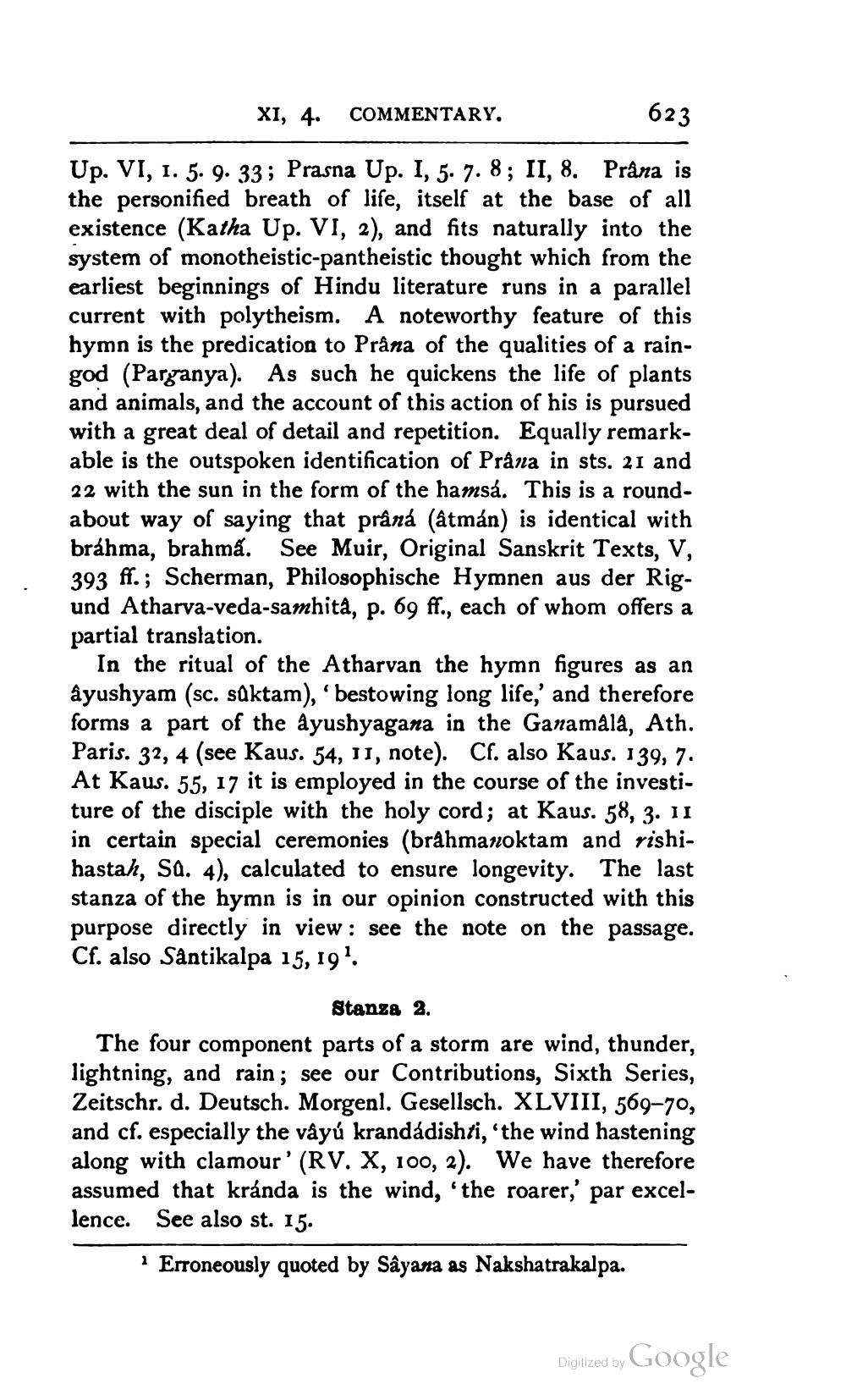________________
XI, 4. COMMENTARY.
623
Up. VI, 1. 5. 9.33; Prasna Up. I, 5. 7. 8; II, 8. Prâna is the personified breath of life, itself at the base of all existence (Katha Up. VI, 2), and fits naturally into the system of monotheistic-pantheistic thought which from the earliest beginnings of Hindu literature runs in a parallel current with polytheism. A noteworthy feature of this hymn is the predication to Prâna of the qualities of a raingod (Parganya). As such he quickens the life of plants and animals, and the account of this action of his is pursued with a great deal of detail and repetition. Equally remarkable is the outspoken identification of Präna in sts. 21 and 22 with the sun in the form of the hamsá. This is a roundabout way of saying that prâná (åtmán) is identical with brahma, brahma. See Muir, Original Sanskrit Texts, V, 393 ff.; Scherman, Philosophische Hymnen aus der Rigund Atharva-veda-samhita, p. 69 ff., each of whom offers a partial translation.
In the ritual of the Atharvan the hymn figures as an ayushyam (sc. saktam), 'bestowing long life,' and therefore forms a part of the ayushyagana in the Ganamala, Ath. Paris. 32, 4 (see Kaus. 54, II, note). Cf. also Kaus. 139, 7. At Kaus. 55, 17 it is employed in the course of the investiture of the disciple with the holy cord; at Kaus. 58, 3. II in certain special ceremonies (brahmanoktam and rishihastah, Sa. 4), calculated to ensure longevity. The last stanza of the hymn is in our opinion constructed with this purpose directly in view : see the note on the passage. Cf. also Santikalpa 15, 19".
Stanza 2. The four component parts of a storm are wind, thunder, lightning, and rain; see our Contributions, Sixth Series, Zeitschr. d. Deutsch. Morgenl. Gesellsch. XLVIII, 569–70, and cf. especially the vâyú krandadishti, 'the wind hastening along with clamour' (RV. X, 100, 2). We have therefore assumed that kránda is the wind, 'the roarer,' par excellence. See also st. 15.
* Erroneously quoted by Sâyana as Nakshatrakalpa.
Digitized by Google




